Behind US stock gains, gold’s climb reflects growing market uncertainty: Macquarie
Introduction & Market Context
Sinch AB (SINCH) shares surged 16.62% on May 8, 2025, following the release of its Q1 2025 financial results, which showed continued growth momentum and margin improvement. The cloud communications platform provider reported its third consecutive quarter of organic growth, with all regions and product categories contributing positively to gross profit expansion.
The strong market reaction builds on momentum from the previous quarter, when the stock rose 12.23% despite an EPS miss, indicating investor confidence in the company’s strategic direction and financial health.
Quarterly Performance Highlights
Sinch reported net sales of SEK 7,049 million in Q1 2025, representing a 4% year-over-year increase, with organic growth of 3%. Gross profit grew by 4% to SEK 2,408 million, with 2% organic growth. The company maintained its gross margin at 34% while improving its adjusted EBITDA margin to 13%, up from 12% in the same period last year.
As shown in the following chart of quarterly net sales performance, Sinch has successfully reversed previous growth challenges:
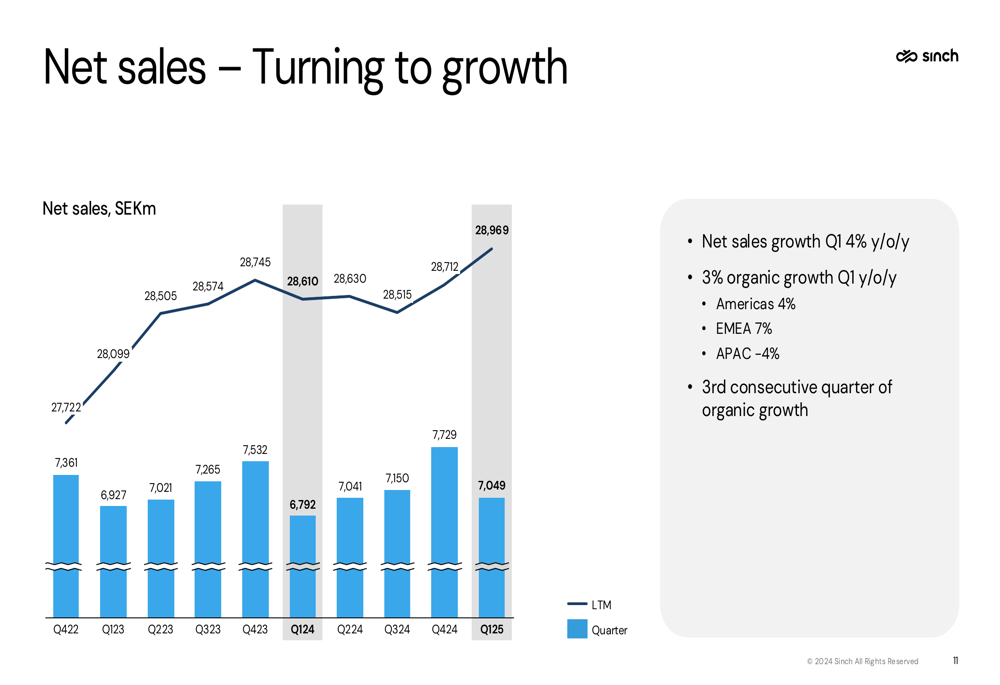
The gross profit trend similarly demonstrates the company’s return to growth, with all regions and product categories contributing to organic gross profit expansion:
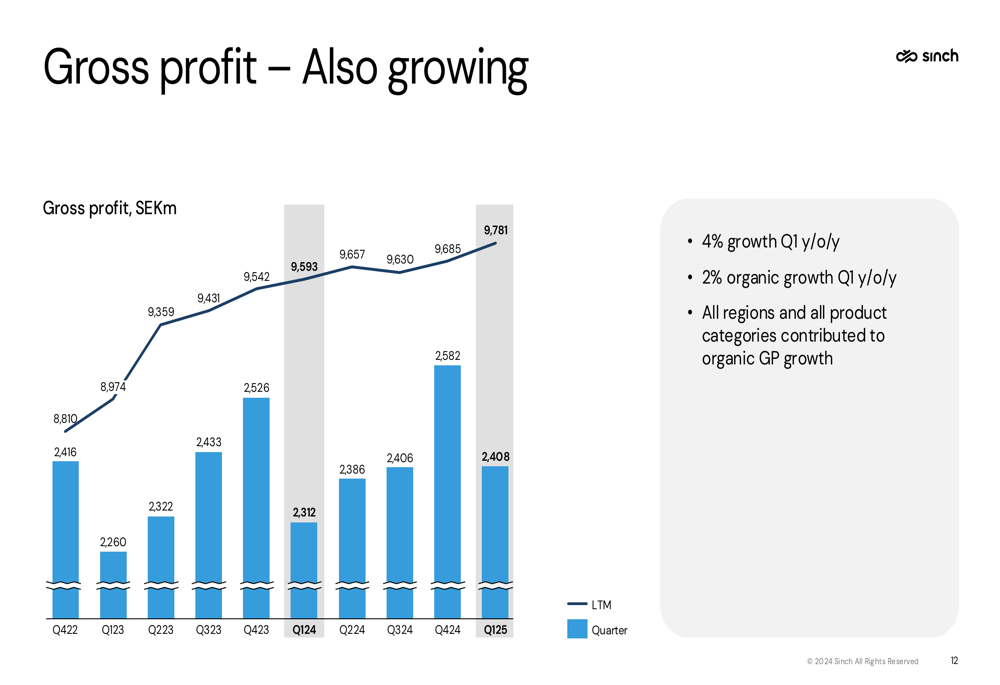
Regional and Product Performance
Sinch’s performance varied across regions, with the Americas and EMEA showing strong organic net sales growth of 4% and 7% respectively, while APAC experienced a 4% decline. However, all regions contributed positively to gross profit growth, with APAC actually delivering the strongest organic gross profit growth at 5%, followed by EMEA at 3% and Americas at 1%.
The company’s product categories all showed positive organic gross profit growth, with Applications leading at 5%, followed by Network Connectivity at 2% and API Platform at 1%. This balanced growth across the portfolio indicates the success of Sinch’s diversified approach.
The following chart illustrates the contribution from all regions and product categories:
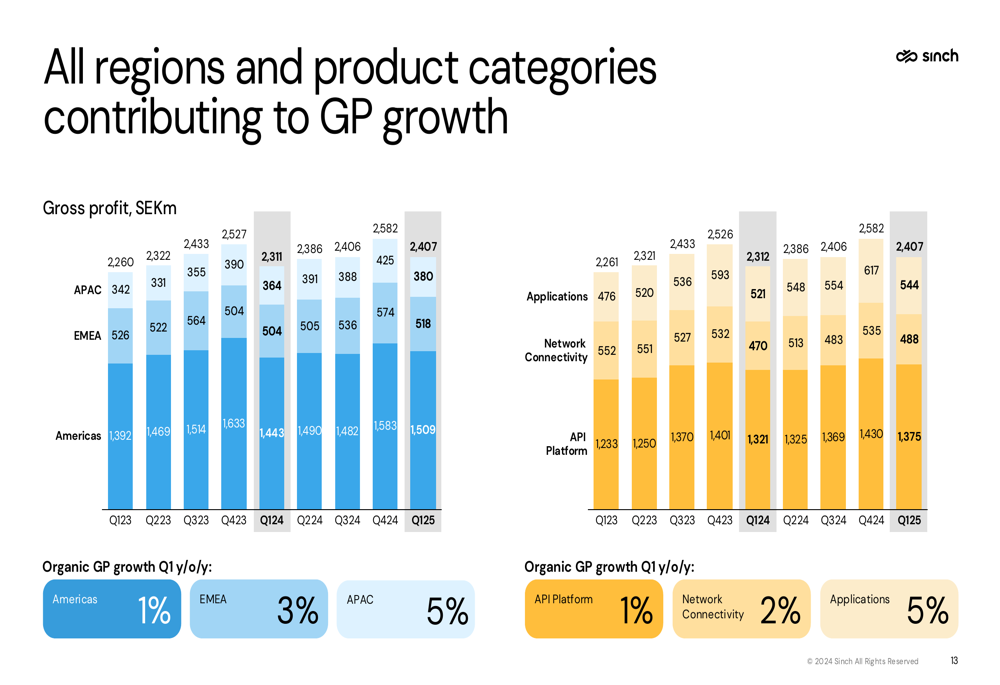
Particularly noteworthy is the turnaround in Network Connectivity, which had previously experienced challenges. After successful renegotiations with suppliers and customers, along with accelerated network upgrades from TDM to IP technology, this segment has returned to growth:

Strategic Initiatives
Sinch highlighted several strategic initiatives driving its growth reacceleration. The company reported significant momentum in RCS (Rich Communication Services), with over 600 million RCS business messages sent in Q1 2025, representing a 50% increase compared to Q4 2024. The launch of Sinch RCS Business Enablement Service is designed to help telecommunications companies seamlessly launch, operate, and monetize RCS for business customers.
The company’s email business continues to perform strongly, with 165 billion emails sent during the quarter, achieving double-digit year-on-year growth in both net sales and gross profit. Sinch completed the onboarding of two large enterprise customers with a combined annual email volume exceeding 100 billion.
As illustrated in the following first quarter highlights, Sinch is also advancing its AI capabilities across its product portfolio:
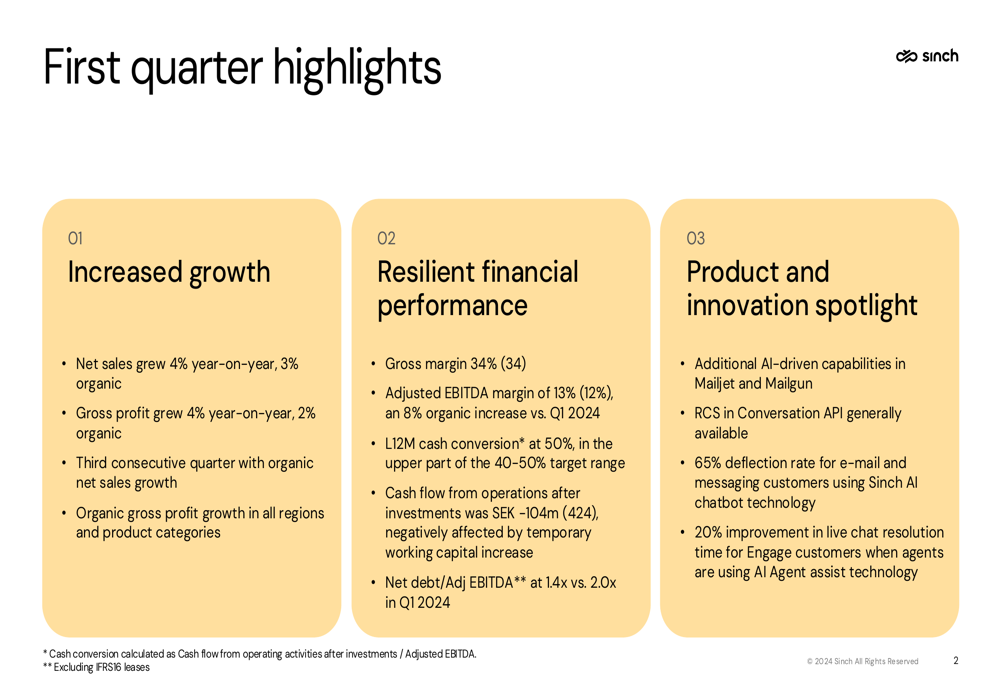
Financial Position and Outlook
Sinch has continued to strengthen its balance sheet, with the net debt to adjusted EBITDA ratio improving to 1.4x, down from 2.0x in Q1 2024. This deleveraging has been driven by both EBITDA improvement and currency impact on the company’s EUR and USD debt.
Cost control measures have supported EBITDA growth, with adjusted operating expenses declining 1% year-over-year in fixed currency. The 12% increase in adjusted EBITDA (8% organic) was primarily driven by gross profit growth flowing through to the bottom line due to flat operating expense development.
The following chart illustrates the positive margin development trends:
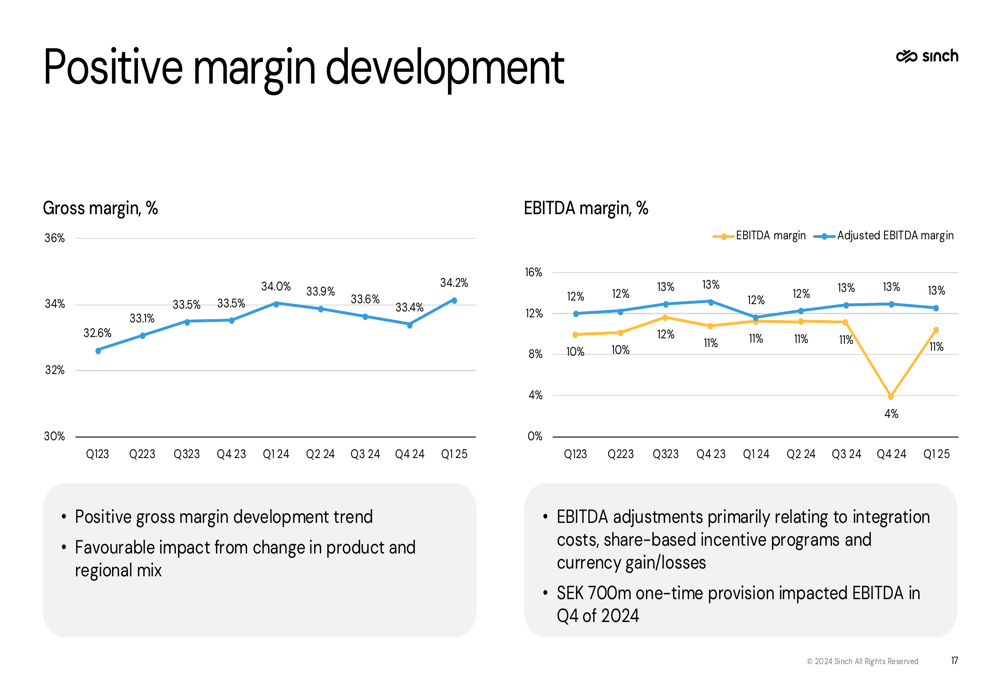
Cash conversion over the last twelve months remained strong at 50%, in the upper part of the company’s 40-50% target range. However, cash flow from operating activities after investments was negative at SEK -104 million in Q1 2025, compared to positive SEK 424 million in Q1 2024, due to a temporary working capital increase related to a cost mitigation agreement with a large supplier.
Looking ahead, Sinch reaffirmed its mid-term financial targets of 7-9% organic growth in net sales and gross profit by the end of 2027, along with an adjusted EBITDA margin of 12-14%. The company’s strategy for value creation focuses on three key areas: growth reacceleration, EBITDA margin expansion, and active capital allocation.
The board has proposed that the Annual General Meeting authorize share buy-backs, reflecting confidence in the company’s financial position and future prospects.
Full presentation:
This article was generated with the support of AI and reviewed by an editor. For more information see our T&C.
